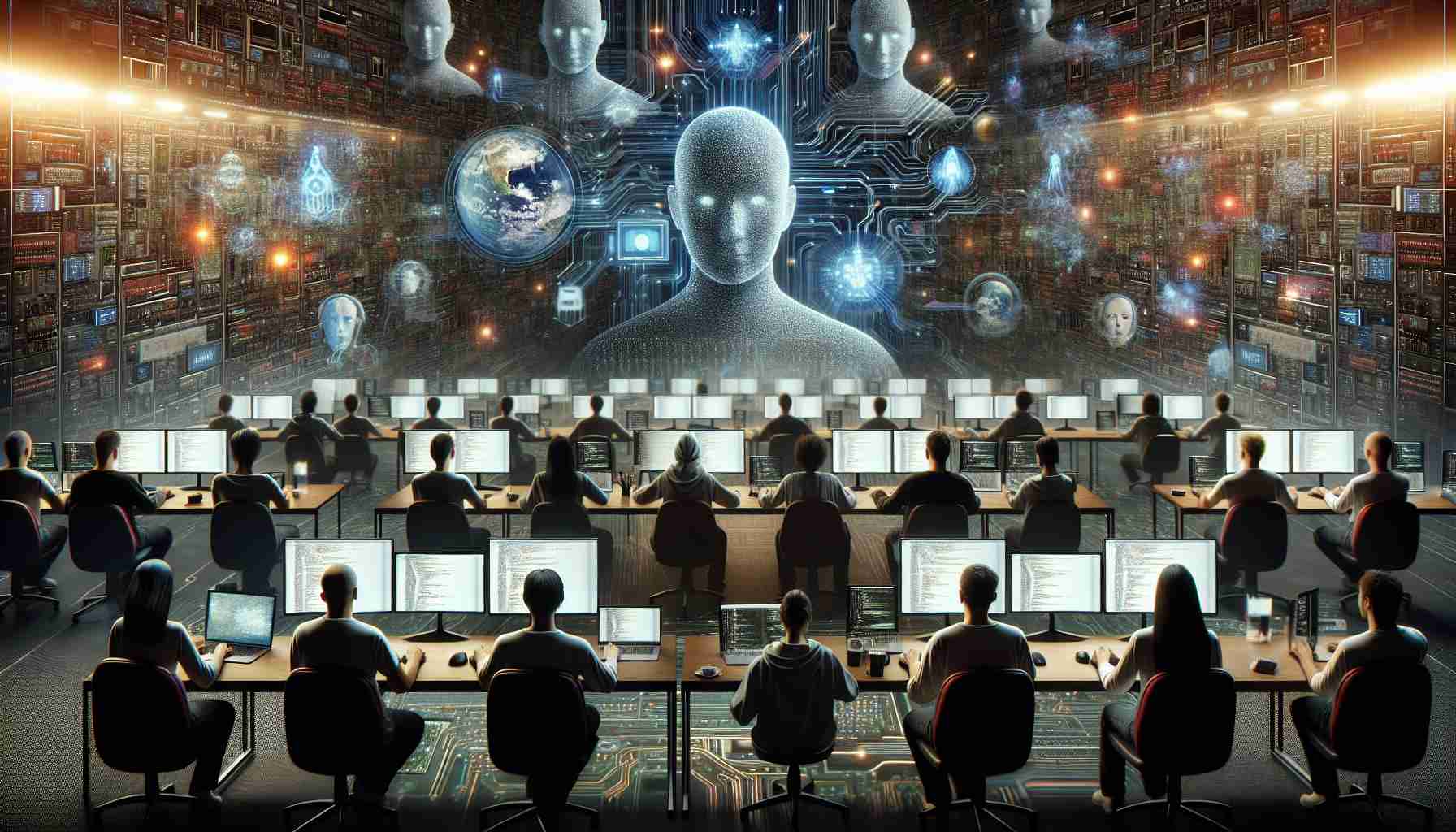- Open-source AI is gaining momentum, with initiatives like DeepSeek leading the charge.
- Projects such as DeepSeek attract innovators who value transparency and collaboration, thriving on platforms like Hugging Face.
- DeepSeek’s open-source model is surpassing competitors by offering an inclusive ecosystem and accessible resources.
- The initiative’s detailed research paper and lower training costs foster widespread innovation and replication.
- Advancements in AI training efficiency reduce the need for costly infrastructure, democratizing access globally.
- Governments worldwide are investing in open-source AI to boost strategic and inclusive growth in the sector.
- The open-source model offers a collaborative path forward, potentially guiding nations in the AI race.
Beneath the dazzling allure of artificial intelligence breakthroughs and the corporate skirmishes for dominance, a quiet revolution is reshaping the landscape: the rise of open-source AI, exemplified by initiatives like DeepSeek.
In the bustling world of AI, while giants like OpenAI capture headlines, it’s projects like DeepSeek that are captivating the true innovators—those who delve deep, build, and reshape models independently. These builders find their haven in platforms like Hugging Face, where the ethos of transparency and accessibility reign supreme. DeepSeek’s open-source model, rapidly surpassing competitors like Llama and Mistral in popularity, embodies this spirit, with over a thousand variants spawning in a stunning display of collaborative creativity.
DeepSeek’s appeal lies not just in numbers but in its philosophy. It presents an alternative path to proprietary models, offering an ecosystem where costs aren’t a towering barrier and where the playing field levels. This inclusiveness is already reflected in reported training costs and a detailed open-access research paper that welcomes innovation by laying bare its methodology for the world to replicate and build upon.
Amidst this shift, AI’s reliance on top-tier, costly infrastructure wanes. Advances in training efficiency signal a bright horizon where even less-advanced hardware can fuel groundbreaking AI, democratizing access and participation in unprecedented ways.
Global governments, from Europe to China, are taking note, funneling investments toward open-source movements, recognizing not just the technical prowess but the strategic gains of fostering inclusive growth. As nations like India look to jump ahead in the AI race, the open-source model’s collaborative pulse could become their guiding beacon.
In this new landscape, AI’s heartbeat isn’t confined to proprietary silos but pulses through an open-source community, where innovation knows no bounds. As the world watches, those partaking in this revolution are redefining what is possible.
Open-Source AI: The Silent Revolution Transforming Technology
How Open-Source AI is Changing the Game
The emergence of open-source AI models like DeepSeek is creating a significant shift in the artificial intelligence landscape. Not only do these models challenge the dominance of established players like OpenAI, but they also foster a culture of innovation and collaboration. By allowing developers from around the world to access, modify, and improve AI models, initiatives like DeepSeek empower a diverse array of talent to contribute to technological advancement.
Pros and Cons of Open-Source AI
Pros:
– Accessibility: Open-source models make AI technology accessible to a broader audience by removing financial barriers.
– Collaboration: They encourage collaboration and community-driven improvements, leading to rapid advancements.
– Transparency: Open-source AI systems offer full transparency, which can help build trust and reliability in AI technologies.
Cons:
– Security Risks: Open-source models can be exploited if not properly secured, potentially leading to misuse.
– Quality Control: Without centralized oversight, the quality of contributions can vary, potentially affecting performance.
– Support Limitations: Unlike proprietary models, open-source projects may lack dedicated customer support.
Market Analysis
The open-source AI market is poised for significant growth as more organizations and governments recognize its potential. With countries like China and India investing heavily in open-source initiatives, the global AI market is expected to see a more level playing field. This democratization could lead to more localized innovations catering to specific regional needs.
FAQs
How does open-source AI benefit startups?
Open-source AI provides startups with powerful tools and models without the financial burden of expensive proprietary software, enabling them to compete with larger companies.
What are the potential challenges of adopting open-source AI?
Organizations might face challenges related to security, integration with existing technologies, and the need for expertise in adapting and maintaining these models.
Trends and Innovations
One trend is the development of AI systems optimized for lower-cost hardware, making AI more accessible. Innovations in efficient training methods further reduce the resource requirements for running powerful AI models.
Security Aspects
Security remains a primary concern, as open-source models are susceptible to vulnerabilities. It is imperative for developers and companies to implement robust security measures to safeguard against potential threats.
Sustainability and Predictions
Open-source AI is inherently more sustainable as it embraces a model of continual improvement driven by the community. Going forward, we can expect more countries to adopt open-source approaches, which can accelerate technological progress and innovation worldwide.
For more information and resources on open-source AI, visit Hugging Face.
As the open-source revolution continues to unfold, it promises a future where AI innovation is not limited by resources but fueled by collective creativity and shared vision.













